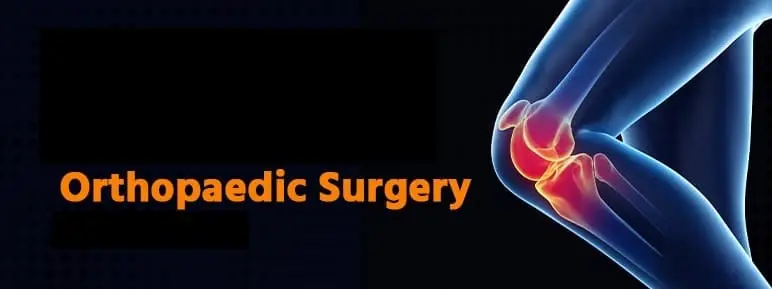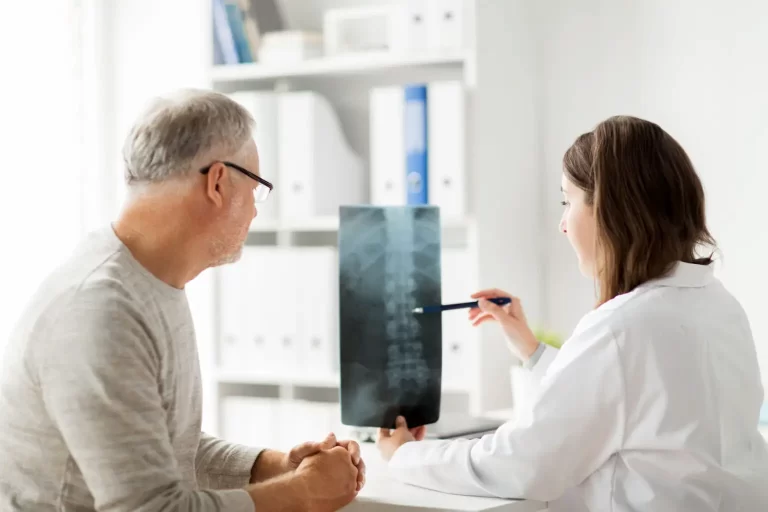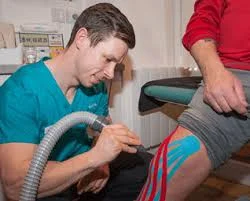Orthopedic surgery
Introduction
Orthopedic surgery, often known as orthopedics (also written orthopedics), is the area of surgery dedicated to treating disorders of the musculoskeletal system.
Orthopedic surgeons treat congenital issues, degenerative diseases, infections, cancer, musculoskeletal trauma, and spine ailments utilizing both surgical and nonsurgical treatments.
Originating from the Ancient Greek terms orthos (“correct”, “straight”) and paidion (“child”), Nicholas Andry first used the word orthopédie in French. In 1741, he wrote Orthopedie, which was later translated as Orthopaedia.
Alternatively, the skill of treating and preventing childhood deformities. At the time, the ligature æ was commonly used in Greek and Latin nouns, therefore the name became orthopedics in English.
The orthopedic practice was founded on the repair of spinal and bone defects in all stages of life, but the name suggests that the discipline was first formed with children in mind.
Differences in spelling
“ae” or plain “e” is commonly simplified, as are many other words produced from the “ae” ligature, notably in North America.
Hospitals frequently use the shorter version, although most US institutions, universities, residency programs, and even the American Academy of Orthopaedic Surgeons spell it with the digraph ae.
Usage varies elsewhere; in Canada, both spellings are accepted; in the UK, “orthopedics” is the standard spelling, consistent with other areas that retain the “ae”.
History
Early Orthopedics
The experiences of combat have resulted in significant advances in orthopedic surgery. Medieval bandages soaked in horse blood were used to treat wounded troops on the battlefield. When the bandages dried, they constructed a solid, albeit unsanitary, splint.
Orthopedics was previously defined as the treatment of pediatric musculoskeletal problems. The phrase was originally used in the first textbook on the issue, which was established in 1741 and authored by Nicolas Andry, a medical professor at the University of Paris.
He believed that splinting, manipulation, and exercise were effective ways to correct children’s anomalies. Although his book was written for parents, it addressed topics that current orthopedists would be familiar with, such as freckles and “excessive sweating of the palms.”
In 1780, Jean-André Venel established the first orthopedic institute, the first medical facility specifically designed to address malformations of the neonatal bone. He developed the club-foot shoe for newborns born with birth defects, as well as many spinal curvature treatment treatments.
Surgical advancements, such as John Hunter’s tendon healing research and spinal deformity research, expanded the range of fresh techniques to successful treatment during the 18th century by Percival Pott.
Lower limb fractures are treated with the double-inclined plane, which was invented in 1790 by the inventive British orthopedist Robert Chessher. The plaster of Paris cast was invented in 1851 by Antonius Mathijsen, a Dutch military physician.
But until the 1890s, orthopedics was limited to treating childhood defects in studies.. However, until the 1890s, research in orthopedics was limited to treating childhood abnormalities. mong the first surgical techniques, a Percutaneous tenotomy was created.
This includes slicing a tendon, originally the Achilles tendon, in addition to bracing and exercises to help repair problems. In the late 1800s and early 1900s, there was a lot of discussion about whether or not orthopedics should do surgical procedures..
Modern Orthopedics
Two notable figures who contributed to the advancement of contemporary orthopedic surgery are Welsh physician Hugh Owen Thomas and his nephew Robert Jones.
After establishing his own practice, Thomas expanded the field of orthopedics to include the general treatment of fractures and other musculoskeletal problems due to his early interest in the field of bone-setting.
He advocated for enforced rest as the best treatment for fractures and TB infection. He also invented the so-called “Thomas splint” to support a fractured femur and avoid fractures.
Thomas is also the name behind many other medical innovations that bear his name: Thomas’s maneuver, an orthopedic investigation for hip fracture, Thomas’s wrench for reducing fractures, and Thomas’s collar for treating tuberculosis of the cervical spine.
The Thomas test is a method of detecting hip deformity by having the patient lie flat in bed and an osteoclast to break and reset bones. During Thomas’s lifetime, his contributions were not fully recognized. His methods were
not applied to injured soldiers on the front lines prior to World War I. His nephew, Sir Robert Jones, had previously accomplished great things in orthopedics as a surgeon-superintendent during the building of the Manchester Ship Canal in 1888.
He was in charge of the 20,000 workers’ injuries, and he set up the world’s first all-inclusive accident service by splitting the 36-mile site into three regions and setting up a hospital and many first-aid stations in each.
He had the medical staff undergo fracture training. oversight. He personally handled 3,000 cases and performed 300 procedures in his own facility. By picking up new techniques in this capacity, he was able to further the field of fracture care.
International doctors came to Jones’ clinic to learn his techniques. Alfred Tubby and Jones founded the British Orthopedic Society in 1894. During World War I, Jones served as a surgeon in the Territorial Army.
Upon realizing that fractures were not receiving proper care at home or in front-line hospitals, he set out to construct military orthopedic institutions. He was appointed Inspector of Military Orthopedics, with responsibility for over 30,000 beds.
The Ducane Road facility in Hammersmith served as the model for military orthopedic facilities in the United States and Great Britain.
Between 1916 and 1918, the mortality rate for open femur fractures decreased from 87% to less than 8% as a result of his advocacy for the use of Thomas splints as the first line of therapy.
Intramedullary rods were initially used for the treatment of femur and tibia fractures by Gerhard Küntscher of Germany. As a result, German soldiers hurt in World War II recovered far faster, and intramedullary therapy for fractures spread throughout the globe.
Traction was the standard therapy for thigh bone fractures until the Seattle organization Harborview Medical Center invented intramedullary fixation without opening up the fracture in the late 1970s.
The modern total hip replacement was created by Sir John Charnley, a tribology specialist at Wrightington Hospital in England, in the 1960s. He found that joint surfaces might potentially be replaced by implants attached to the bone.
His design had a single-piece stainless steel femoral stem and head that were bonded to the bone with PMMA (acrylic) bone cement, as well as a polyethylene acetabular component. For over two decades, the Charnley low-friction arthroplasty and its variations controlled the global market.
All of the modern hip implants were modeled after this. Knee replacements, developed using similar technology, were first utilized in the 1970s by Gunston and Marmor for osteoarthritis and later by McIntosh in patients with rheumatoid arthritis.
Frederick Buechel and Michael Pappas created a movable bearing system in New York, whereas John Insall created a permanent bearing system.
The external fixation of fractures was greatly enhanced by American surgeons during the Vietnam War, but Gavril Abramovich Ilizarov in the USSR made a major contribution. He had never studied orthopedics, but in the 1950s he was sent to Siberia to treat Russian soldiers who had been injured.
Without any equipment, he had to deal with the incapacitating conditions of unhealed, infected, and misaligned fractures.
With help from the local bike shop, he created ring external fixators that were tensioned like spokes on a bicycle. With this technology, he was able to achieve healing, realignment, and lengthening at a degree never before possible.
One of the methods of distraction osteogenesis used today is the Ilizarov device. The goals of musculoskeletal research and modern orthopedic surgery have been to decrease surgical morbidity and enhance the durability and quality of implanted components.
On the other hand, since the pandemic’s beginning, orthopedic surgeons have been found to be among the medical professionals who prescribe the most amounts of opioids.
It is likely that the future of orthopedic surgery will involve finding ways to manage patients’ pain appropriately while prescribing fewer narcotics.
Training
In the United States, orthopedic surgeons typically hold a Doctor of Medicine (MD) or Doctor of Osteopathic Medicine (DO) degree following four years of undergraduate education and four years of practical training in medical school.
After graduating from medical school, these candidates undertake residency training in orthopedic surgery. The five-year orthopedic surgery residency program is divided into different categories. Admission to orthopedic surgery residencies is highly competitive.
Every year, about 700 physicians complete their orthopedic residency training in the US.. Currently, women make up 10% of orthopedic surgery residents, while those from minority groups make up 20%.
Currently practicing orthopedic surgeons and residents in the US number roughly 20,400. In the most recent edition of the US Department of Labor’s Occupational Outlook Handbook (2011– 2012), orthopedic surgeons make up 3-4% of all practicing doctors.
Following their completion of residency training, a large number of orthopedic surgeons elect to seek fellowships or additional education. The clinical and operational training of a one-year (or possibly two-year) orthopedic specialist fellowship may involve a research component on occasion.
In the US, some instances of orthopedic specialist training are:
- Foot and ankle surgery
- Hand and upper extremities
- Hip and knee surgery
- Orthopedic oncologist
- Orthopedic trauma
- Osseointegration
- Pediatric orthopedics
- Shoulder and elbow
- Spine surgery
- Surgical sports medicine
- Total joint reconstruction (arthroplasty)
These categories encompass more medical specialties than just orthopedic surgery. For example, most neurosurgeons perform spine surgery, but some plastic surgeons have a focus on hand surgery.
Additionally, some foot and ankle surgeries are performed by board-certified podiatric physicians (DPMs) in the United States. Some family practice physicians practice sports medicine as a nonoperative specialty.
After completing their specialized training, orthopedic surgeons can apply for board certification from the American Board of Medical Specialties or the American Osteopathic Association Bureau of Osteopathic Specialists residency or registrar training.
An orthopedic surgeon has met the requirements when they receive certification from the American Board of Orthopedic Surgery or the American Osteopathic Board of Orthopedic Surgery the board for examination, assessment, and education.
The process involves passing an oral exam that centers on the surgeon’s clinical and surgical performance during a six-month period, followed by a standardized written exam.
In Australia and New Zealand, the Royal Australasian College of Surgeons is the certifying authority; in Canada, it is known as the Royal College of Physicians and Surgeons of Canada.
Experts in orthopedic sports medicine and hand surgery in the US can obtain a certificate of additional credentials in addition to their board’s primary accreditation by passing an additional, standardized test. It is not necessary to follow a different certification process for the other subspecialties.
Practice
Based on applications for board certification submitted between 1999 and 2003, orthopedic surgeons conducted the following 25 operations in order of frequency:
- Meniscusectomy and knee arthroscopy
- Arthroscopy and decompression of the shoulder
- Release of the carpal tunnel
- knee replacement and arthroscopy
- Take out of the supporting implant
- Anterior cruciate ligament repair and knee arthroscopy
- knee replacement
- femoral neck fracture healing
- Trochanteric fracture repair
- Fracture of the skin, muscle, bone, or other tissue
- Menisci on both knees repaired with arthroscopy
- replacement of the hip
- arthroscopy of the shoulder with distal clavicle removal
- rotator cuff tendon repair
- mend a fractured radius or ulna
- Laminectomy
- Ankle fracture repair (bimalleolar kind)
- Debridement and arthroscopy of the shoulder
- Fusion of the lumbar spine
- Fixation of the distal radius fracture
- Low back intervertebral disc replacement
- The sheath of the incised finger tendon
- repair of a fibula fracture in the ankle
- femoral shaft fracture repair
- Trochanteric fracture repair
In private practice, an orthopedic surgeon often puts in 50–55 hours a week between clinic visits, surgical procedures, various administrative duties, and, if they work in academia, teaching and/or research. According to a 2021 report by the American Association of Medical Colleges, the average weekly workload for an orthopedic surgeon was 57 hours.
This estimate, however, is rather low given findings from a 2013 research of orthopedic physicians who regarded their prominent positions in the field as reasons for their “high success.” The profession revealed that they put in at least 70 hours a week on average.
Arthroscopy
The utilization of arthroscopic techniques has shown to be extremely important for injured individuals. Early in the 1950s, Masaki Watanabe of Japan developed arthroscopy as a minimally invasive procedure for repairing torn ligaments and cartilage.
Patients can recover from surgery with arthroscopy, a frequent practice, in a matter of days as compared to weeks or months as with traditional, “open” surgery.
These days, knee arthroscopy is one of the most common operations performed by orthopedic surgeons. It is sometimes combined with meniscectomy or chondroplasty.
Arthroplasty
An osteotomy or other procedure is used in an arthroplasty to replace, reconstruct, or realign a musculoskeletal joint’s articular surface. Chemosurgery is an elective procedure intended to treat damaged joints brought on by arthritis or trauma.
Reducing discomfort and restoring joint function are the objectives. A typical option is uni-compartmental knee replacement, which replaces just one weight-bearing component of the arthritic knee, in addition to standard total knee replacement surgery.
Prosthetic devices can also be used to replace other joints, including the spine, finger joints, elbow, wrist, ankle, and hip. Recently, younger and more active patients have been more and more interested in joint surface replacement, especially for the hip joint.
While this type of treatment carries a higher risk of early failure from fracture and bone death, it does not negate the need for a more traditional, less bone-conserving complete hip replacement.
One of the main problems with joint replacements is wear on the surfaces that support the component. This could damage the neighboring bone and eventually lead to implant failure.
Substitute-bearing surfaces are increasingly being used, particularly in younger patients, in an attempt to improve the wear characteristics of joint replacement components.
These include ceramic implants and implants composed wholly of metal (as opposed to the original metal-on-plastic ones). The material of choice is frequently ultra-high molecular weight polyethylene, although it can also be altered in ways that might improve its wear characteristics.
Epidemiology
In the United States, the percentage of operating room (OR) operations conducted during hospital stays that were related to musculoskeletal conditions rose sharply between 2001 and 2016, from 17.9% to 24.2%.
A 2012 study on hospitalizations in the United States found that spine and joint procedures were frequently performed on all age groups, with the exception of infants.
Spinal fusion ranked among the top five OR procedures in all age groups, with the exception of seniors 85 years of age and younger neonates.
Laminectomy was prevalent in people between the ages of 18 and 84. Hip replacement and knee arthroplasty ranked among the top five OR procedures for patients 45 years of age and older.
FAQ
How many types of orthopedics are there?
Orthopedists can be categorized as either surgical or noninvasive. Orthopedic surgeons are those who do surgery, whereas physiatrists and physical medicine and rehabilitation specialists are nonsurgical orthopedists. A bigger orthopedic treatment team frequently includes an orthopedist.
What is an orthopedic surgeon doctor of?
An orthopedic surgeon is trained to diagnose orthopedic conditions, execute or prescribe treatments, and help with rehabilitation. They can also assist you in developing long-term treatment plans for illnesses, disorders, and concerns affecting your bones, joints, ligaments, tendons, and muscles.
What is done in orthopedics?
Orthopedics is a medical specialty that focuses on treating bones and muscles. Orthopedic surgery is the branch of medicine that deals with diseases, injuries, and ailments affecting the musculoskeletal system, which includes the body’s muscles and skeleton. This includes the ligaments, tendons, nerves, and joints.
What is the hardest orthopedic surgery?
The most challenging surgery for Orthopedic Doctors is usually sophisticated joint replacements that necessitate substantial training and ability. Joint replacements frequently include removing diseased bone and cartilage and replacing them with artificial components.
What is an orthopedic problem?
Orthopedic troubles refer to any abnormalities with your body’s musculoskeletal system. Most orthopedic ailments are uncomfortable, and if not treated appropriately, they can lead to additional health issues. The following is a list of some of the most common orthopedic problems and the most effective treatments for them.
Is orthopedics a good field?
Is orthopedic surgery a rewarding career? Orthopedic surgery is a fantastic career choice, however, any profession in medicine is difficult and requires a significant sacrifice. Orthopedic surgeons complete four years of medical school, five years of residency, and often one year of fellowship training.
How do you take care of an orthopedic patient?
Bed rest and administering ice to the affected area may significantly alleviate your pain. Adhesive bandages aid to heal the wound. Dressing requires proper care. You should change your dressing every 1 or 2 days, and this can be discontinued once the wound begins to heal.






3 Comments